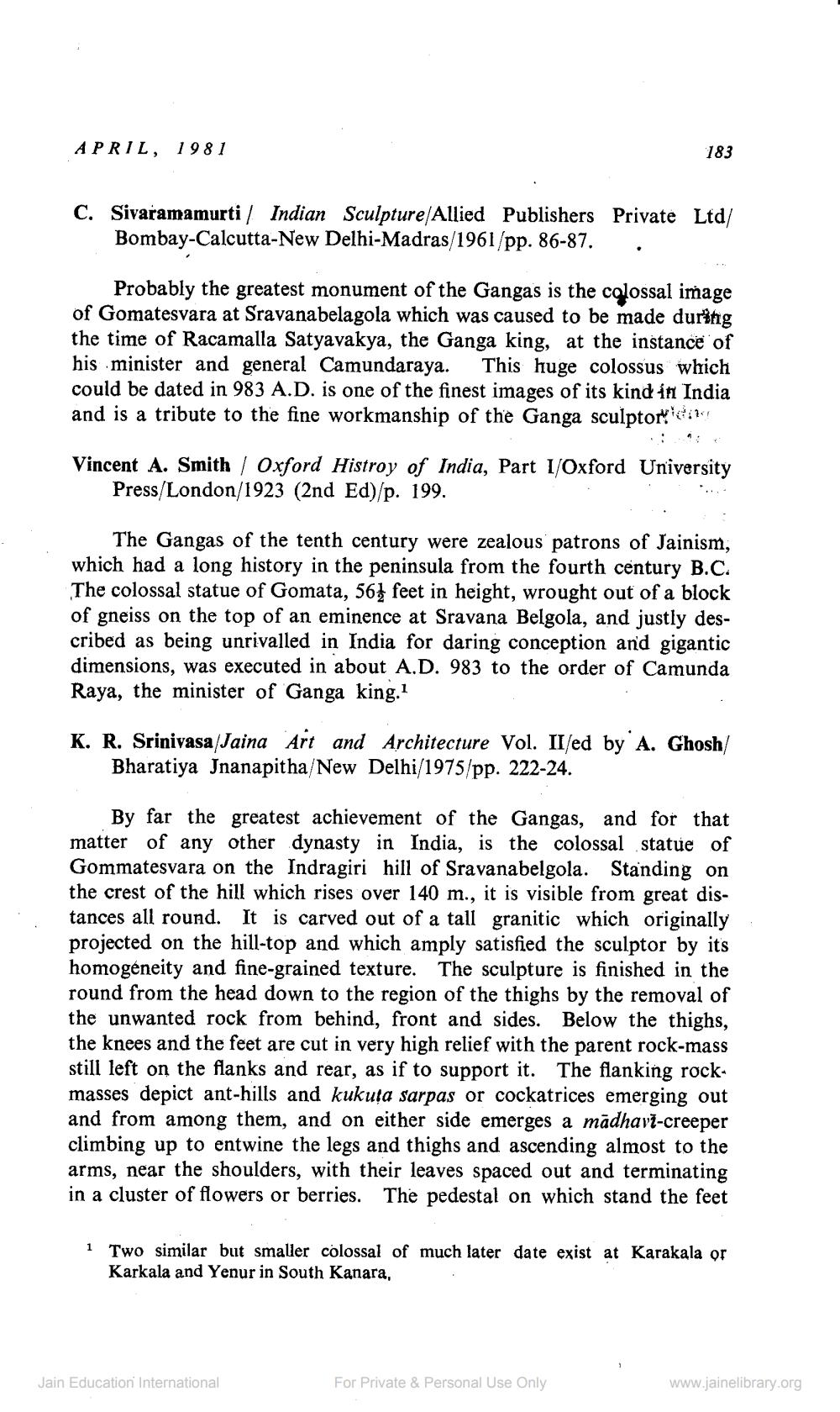________________
APRIL, 1981
183
C. Sivaramamurti | Indian Sculpture Allied Publishers Private Ltd/
Bombay-Calcutta-New Delhi-Madras/1961/pp. 86-87. .
Probably the greatest monument of the Gangas is the colossal image of Gomatesvara at Sravanabelagola which was caused to be made during the time of Racamalla Satyavakya, the Ganga king, at the instance of his minister and general Camundaraya. This huge colossus which could be dated in 983 A.D. is one of the finest images of its kind in India and is a tribute to the fine workmanship of the Ganga sculptor
Vincent A. Smith / Oxford Histroy of India, Part 1/Oxford University
Press/London 1923 (2nd Ed)/p. 199.
The Gangas of the tenth century were zealous patrons of Jainism, which had a long history in the peninsula from the fourth century B.C. The colossal statue of Gomata, 561 feet in height, wrought out of a block of gneiss on the top of an eminence at Sravana Belgola, and justly described as being unrivalled in India for daring conception and gigantic dimensions, was executed in about A.D. 983 to the order of Camunda Raya, the minister of Ganga king.
K. R. Srinivasa Jaina Art and Architecture Vol. II/ed by A. Ghosh/
Bharatiya Jnanapitha/New Delhi/1975/pp. 222-24.
By far the greatest achievement of the Gangas, and for that matter of any other dynasty in India, is the colossal statue of Gommatesvara on the Indragiri hill of Sravanabelgola. Standing on the crest of the hill which rises over 140 m., it is visible from great distances all round. It is carved out of a tall granitic which originally projected on the hill-top and which amply satisfied the sculptor by its homogeneity and fine-grained texture. The sculpture is finished in the round from the head down to the region of the thighs by the removal of the unwanted rock from behind, front and sides. Below the thighs, the knees and the feet are cut in very high relief with the parent rock-mass still left on the flanks and rear, as if to support it. The flanking rockmasses depict ant-hills and kukuta sarpas or cockatrices emerging out and from among them, and on either side emerges a mādhavž-creeper climbing up to entwine the legs and thighs and ascending almost to the arms, near the shoulders, with their leaves spaced out and terminating in a cluster of flowers or berries. The pedestal on which stand the feet
1 Two similar but smaller colossal of much later date exist at Karakala or
Karkala and Yenur in South Kanara,
Jain Education International
For Private & Personal Use Only
www.jainelibrary.org




